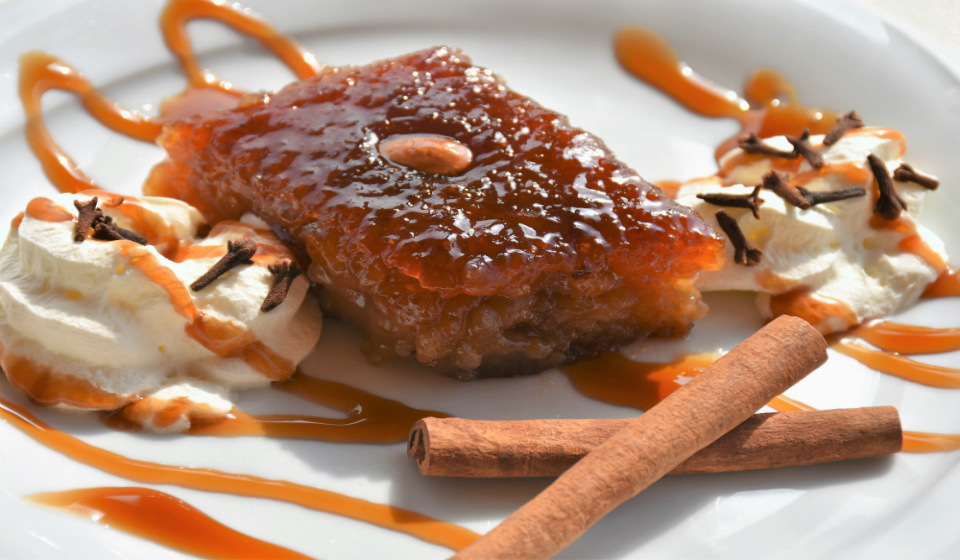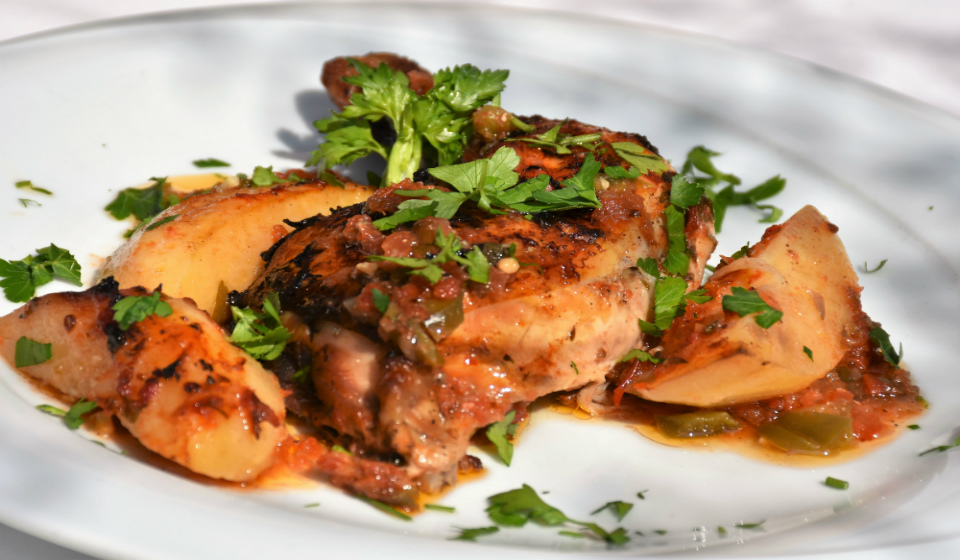Tastes of the ithacan cuisine
A vital and important element of any local culture is its people’s tastes and choices in food, drink and cooking. For this reason one of the first things any visitor will do is to seek out and taste the local cuisine. Ithacan cuisine makes the best use of local wine, oil from unripe olives, meat and fish reared and caught locally. What also makes a distinctive contribution to food prepared in Ithaca is the use of the diverse range of local vegetables and wild greens easily available in allotments, gardens and the surrounding hillsides.
This local produce of artichokes, wild greens, both sweet and bitter, sorrel, chicory plant and Swiss chard is so testily evident in all local vegetable pies. Ithacans love to add to their food herbs found on the island such as sapsychos of the marjoram family and which can only be found in Ithaca and is used in a variety of dishes. We must not ignore the liberal use of sage, oregano, wild thyme and, especially, barbaroza, found in every garden and which flavours so many of the domestic ‘spoon sweets’.


One of Ithaca’s most important products is its excellent virgin olive oil which is used liberally in cooking hot dishes and in presenting salads. This oil enhances the gastronomic experience, especially of soups and vegetable dishes where consumption is accompanied by the sipping of fine local wine. We must also acknowledge the fine quality of honey which is now produced in many parts of the island as part of the domestic industry.
The cooking habits of the ‘seven Ionian islands’ have also been influenced by the Venetians who left behind them a cosmopolitan and gourmet heritage and, indeed, many local dishes retain, to this day, their original Italian names, e.g. bourghetto, savoro, poulenta, sofigado, polpette, toumatsi, castagnole. The British also left their mark with ginger beer which, sadly, is no longer produced on the island. Today, perhaps the most characteristic Ithacan dish is chicken ‘tserepa’ cooked in a sealed earthenware dish.





